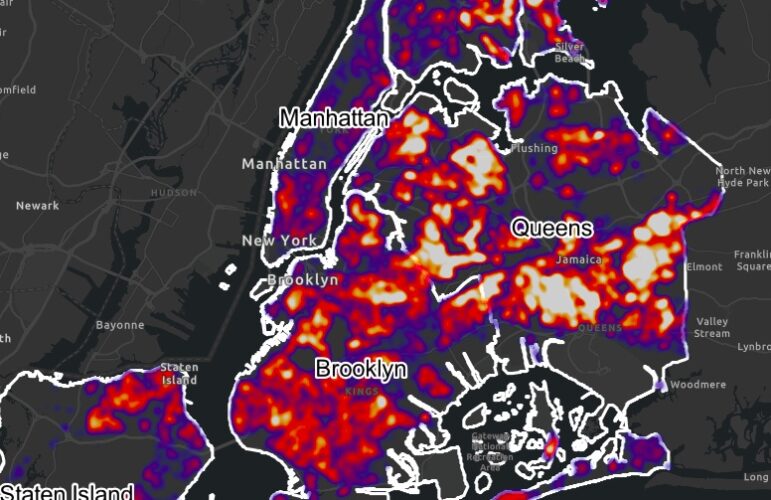Who will be the n—-r? This question is a rhetorical ghost in Carol Swain’s The New White Nationalism In America. It haunts every page, as a reminder of our sordid social history, but it is not examined as our inheritance, and therein lies Swain’s immediate failure.
Swain, a professor of political science and law at Vanderbilt University, has written many books in one. There is the book about growing up as a poor black girl in rural southern environs. There is the book about how her enrollment in a community college ignited her fanatical determination to succeed and the book about the mentorship she received almost exclusively from white males. There is the book about the disdain that many elite blacks have towards poor blacks–“a degree of class snobbishness,” she writes, “that is rarely discussed outside of minority circles.”
Any one of those books could have provided an unusual depth of insight into that great, unexplored topic, social mobility among blacks–particularly middle- and upper-middle- class blacks one generation removed from plastic-slipcovers-on-furniture poverty.
Swain, however, is after more elusive dogmatic prey. Her animus toward the liberal elite, coupled with her disdain for affirmative action, culminates in an empathetic examination of the grievances of white nationalist groups led by a coterie of avowed white supremacists: David Duke, Jared Taylor, Reno Wolfe, Don Black, Michael Hart, Dan Gayman, Matthew Hale, Lisa Turner and William Pierce. (Pierce, the author of the infamous racist tract The Turner Diaries, died this past July.) Working and middle-class whites could conceivably form a coalition with their black counterparts, she implies, through the schizophrenic and racist vehicle of white supremacist organizations. After all, there are blacks who believe affirmative action does not help them and that the influx of immigrants erodes their socioeconomic mobility.
Swain contends, at times convincingly, that affirmative action does not benefit poor or working-class whites or blacks. Her authority on the shibboleths of race and class is informed by her working-class pedigree: “When I express reservations about certain forms of current affirmative action policy,” she writes, “I do so from the standpoint of a black woman with a firsthand knowledge of what it means to be poor and disadvantaged in America.”
She argues that white supremacist groups are becoming the voice of working- and middle-class whites. The fate of the nation, she believes, now rests upon the liberal elite’s ability to resolve those whites’ grievances about black-on-white crime, multiculturalism, globalization, affirmative action and immigrants from third world countries. Their failure to do so could result in a race war. (Conservatives, presumably, already understand this.)
Swain believes that sincere religious conviction, mainly to Christianity, can eliminate racial strife. She also contends that more public funds should be invested in community colleges, that welfare agencies should be audited to make sure they are disbursing monies to the poor, and that government agencies should forge partnerships with car dealerships to help the working poor buy cars, since reliable access to transportation is crucial to obtaining jobs.
These are solid recommendations, firmly rooted in Swain’s working-class experience. The tragedy is that Swain’s hunger for honest dialogue about race relations, coupled with her desire to be novel, results in a bizarre conflation of the legitimate concerns of the white working and middle classes with the baseline ethos of racist manifest destiny.
If Swain had read sociologist Kathleen Blee’s 20-year body of work on white supremacist groups, she would know that there is no basis for an accord here. White supremacists reject affirmative action and immigration because they represent levels of social mobility on the part of people of color that they simply cannot countenance. White supremacists cannot accept a vision of American society where people of color can rise above–or even equal–whites. Blacks have to be on the bottom; their whole world is rooted on this.
_______
Swain is right about one thing: Liberal intellectuals have failed to honestly define breadbasket issues–race relations, affirmative action, crime, welfare reform, income inequality and family values–that resonate with average Americans. This failure has contributed to the rise of a new breed of conservative intellectuals like Swain and John McWhorter. Meanwhile, white liberals occupy themselves in a high-flown discussion among academic and intellectual elites about white privilege.
In the burgeoning field of whiteness studies, largely the province of whites, scholars examine the relationship of white identity to privilege and hegemony. In Colored White: Transcending The Racial Past, a collection of previously published essays, David R. Roediger explores how we can “move beyond whiteness” as a badge of privilege. Using the example of Elvis Presley, he argues, not at all convincingly, that whites adopting the cultural expressions of blacks–what the cultural historian Ann Douglas might call “mongrelization”–is our best hope of nullifying white identity. (That he does not discuss any other conduit for crossing over besides culture–specifically, music–is a significant omission.)
Colored White is labored reading for the layperson. Nevertheless, it offers a much more textured critique of race relations than The New White Nationalism. In “What if Labor Were Not White and Male,” Roediger, a professor of history at the University of Illinois at Urbana, avoids the mumbo jumbo of cultural studies and writes with stunning historical probity. And in “All About Eve, Critical White Studies and Getting Over Whiteness,” he provides a good historical overview of whiteness studies itself.
Roediger acknowledges that whiteness studies is, essentially, an appropriation of the writings of people of color and their authority on racism. In “All About Eve,” Roediger makes the ancillary argument that scholars and intellectuals of color are not only disregarded by the white intelligentsia as experts, but are also maintained in a system of softcore academic white supremacy: “Characterizing the study of whiteness as a project of white scholars,” he writes, “thus represents both a continued insistence on placing whites at the center of everything and continuing refusal to take seriously the insights into whiteness that people of color offer. The enduring and scandalous inability of historians to come to grips with Du Bois as an expert on the past of the white south is one index of this failure.” Even in the academy, it seems, scholars of color have to be at the bottom.
The subordinate status of intellectuals of color is also an index of the failure of white academics–including Roediger et al.–to give up any privilege. By skirting any forthright examination of racism in the academy, Roediger avoids questions closer to home: Under what circumstances will elite white liberals give up privileges that have accrued to them? Or is Roediger’s analysis of white privilege aimed strictly at working- and middle-class whites?
Leaving these questions to the critical imagination, most of Colored White consists of overly theorized conceptions of white privilege. Consider this passage, from “White Looks and Limbaugh’s Laugh,” in which Roediger writes with the mimicked incomprehensibility of a graduate student: “Limbaugh’s laugh clashed dramatically with the much-emphasized attribute of the imperialist gaze: its production of the illusion of an absence of the European male viewer, an absence that Giselda [sic] Pollock characterized as the ‘real meaning of the Orientalist project.'”
Though I might agree with Roediger in principle, I would be more inclined to read Swain. Roediger’s unreadability stems from the fact that he is writing for an academic audience, whereas Swain is writing for the general public. For Roediger, this is just plain bad literary and political strategy. If he sincerely wants whiteness studies to be part of a larger dialogue, then he needs to write for a less exclusive audience.
Swain may be casting her net a little too widely, but part of her message is, sad to say, absolutely correct. In order to have a frank, painful, and honest discussion about race in this country, we have to forego the liberal niceties of touchy-feely egalitarianism. The cognitive process of racism is so embedded in the psyche of Americans that Roediger’s ultimate solution–“crossing over into nonwhiteness”–is completely unrealistic. It also nullifies any hope of pluralism: By erasing whiteness, he creates a kind of reverse hegemony of blackness.
We cannot be so silly as to believe that race neutrality–if that, indeed, is the ultimate goal–will result in the equitable allocation of resources and power in this republic. I am reminded of Douglass Turner Ward’s play, Day of Absence, which depicts the racial hysteria that ensues when whites have no one else below them. It is set in a small southern town in 1965 where, one day, all of the blacks mysteriously disappear. Suddenly confronted with no fixed racial hierarchy, whites are paralyzed–and immediately begin redefining the underclass.
Who will be at the bottom? For working- and middle-class Americans, this remains the vexing question.
Hakim Hasan is the director of the Urban Institute at Metropolitan College of New York. Contact him at hhasan2@aol.com.









